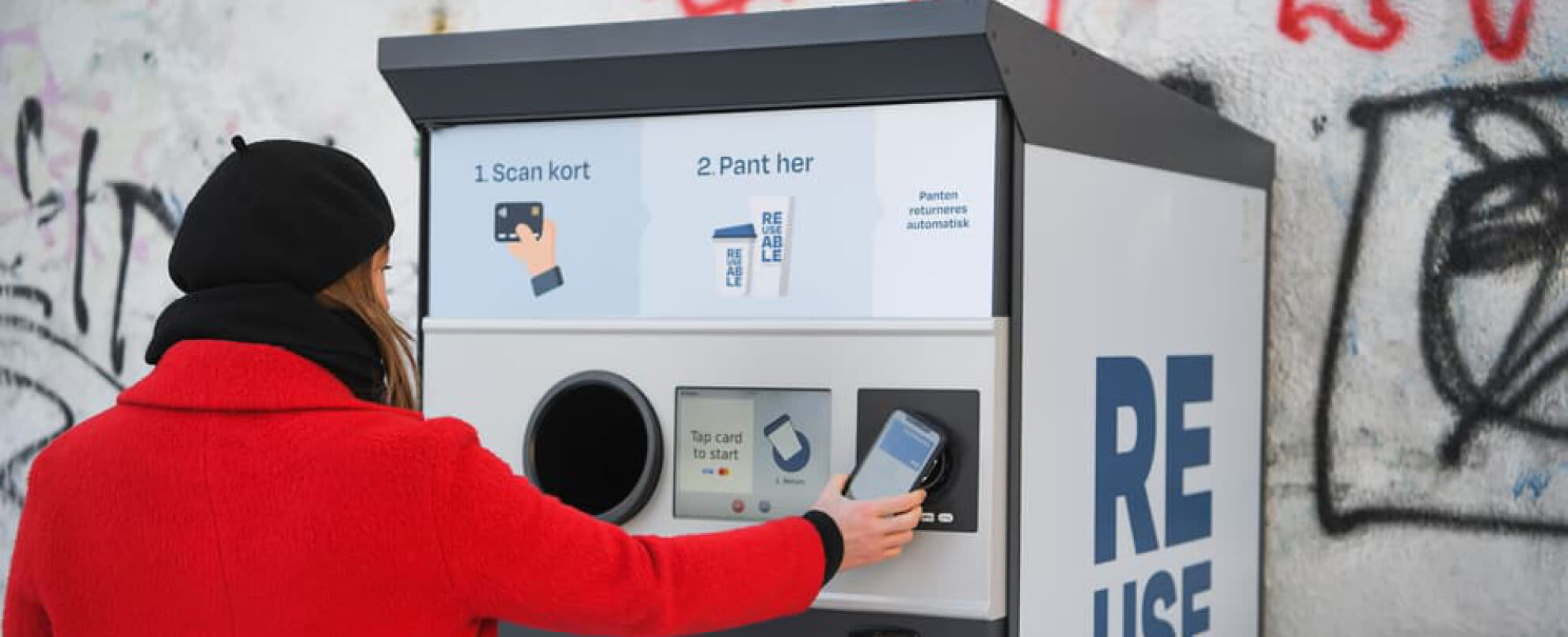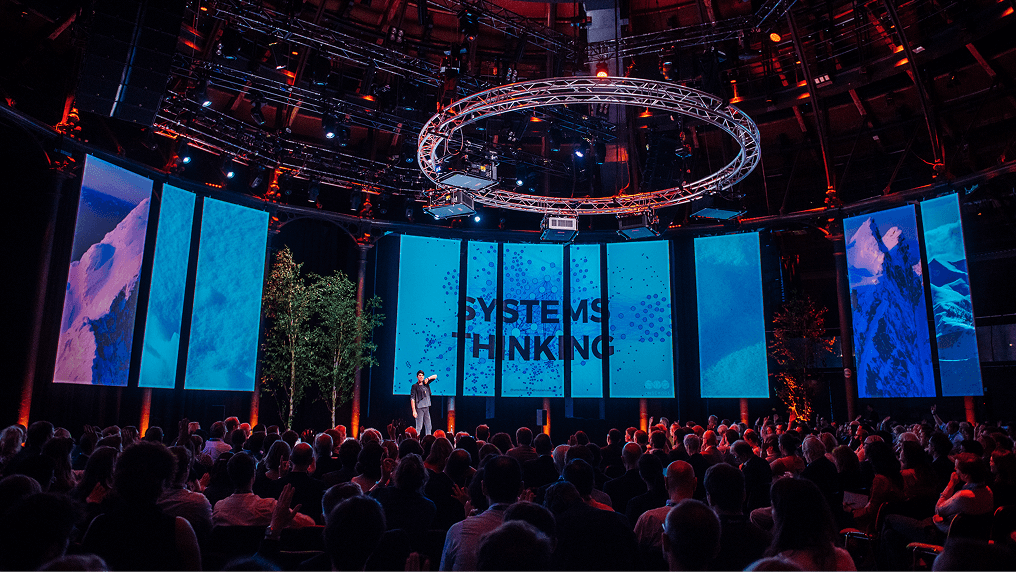In brief
In a move to help accelerate the circular economy, Visa has partnered with TOMRA, Shift4, and the municipality of Aarhus in Denmark to design and implement a fully digital payment process for TOMRA Reuse’s reverse vending machines (RVM). This enables customers to return reusable packaging and instantly receive the deposit through a digital payout to their card or contactless device such as a phone or smartwatch.
This collaboration is an example of the transformative potential of digital solutions in facilitating circular business models. Improving consumer convenience supports the transition to move away from single-use items; allowing materials to be reused, recycled or composted.
It is exciting when technology is used to help accelerate the circular economy and support consumers and businesses to make greener choices" - Visa
Why it’s an example of the circular economy
Research shows that in the most ambitious scenario, returnable plastic packaging could lower greenhouse gas emissions and water use associated with packaging by 35%- 70% and material use by 45%-75% compared with single-use packaging.
With around 55 billion takeaway packages discarded annually in Europe, there is a pressing need to accelerate such reusereuseThe repeated use of a product or component for its intended purpose without significant modification. efforts and reduce waste. Current RVM systems in Europe normally require multiple steps and often employ paper coupons to redeem money in retail stores, which can be inconvenient for customers. This partnership will help to reduce paper waste and help shape how customers engage with reusable materials.
How it works
The Mechanism of Change
Visa and Shift4's approach transforms the reverse vending experience through digital innovation with a "Tap-on-Card" functionality.
Once a customer selects the product off the shelf, a deposit for the returnable packaging is included in the price at the point of purchase. When the customer takes back the items, they are scanned by TOMRA's RVM sensors to validate that the deposit can now be reimbursed to the customer. Then, instead of dispensing the refund in cash or vouchers, users can tap their contactless card to get their money paid straight back into their account.
How it enables circular business models
Using technology in this way offers consumers a compelling incentive to return packaging for reuse and recycling. By integrating digital payment technologies within the circular economycircular economyA systems solution framework that tackles global challenges like climate change, biodiversity loss, waste, and pollution. It is based on three principles, driven by design: eliminate waste and pollution, circulate products and materials (at their highest value), and regenerate nature. framework, circular business models can enhance user engagement, and promote a culture of reuse. Removing payment barriers and creating seamless and secure transactions has been shown to successfully drive customer adoption of new business models in a variety of scenarios. For example in an urban mobility Visa case study, transit agencies increased ridership by introducing contactless payments.
How can this scale and enable broader systems change
As well as building real-world case studies, projects like this can inform broader systems change towards reuse at scale. RVMs collect data to help companies and policymakers track recovery rates and adjust strategies, such as economic incentives, marketing campaigns, and material durabilitydurabilityThe ability of a product, component or material to remain functional and relevant when used as intended..
Lessons learnt
By fostering innovation and embracing collaborative models, Visa, TOMRA, and Shift4 showcase the potential of technology and partnership in creating scalable systems that advance the circular economy.
Explore more
In Unlocking a reuse revolution: scaling returnable packaging, the Ellen MacArthur Foundation identified the importance of reuse and scaling returnable packaging in addressing waste and pollution. In order to reap the full economic and environmental benefits of returnable models, there are key challenges to overcome, such as high setup costs, maintaining consumer engagement, and standardising packaging. To understand the role that digital innovation and partnerships can play in overcoming these challenges and realising the full opportunity that reuse models offer, you can explore the report’s findings here.






